
- Home
- Managing An Irrigation System
- Planning System Hardware
- Farm Irrigation Systems & Cost Analysis
- Water Resource Development
- Micro Irrigation Handbook
- Related Links
Essential Management Requirements
Larry M. Curtis, Extension Agricultural Engineer
Ted W. Tyson, Extension Agricultural Engineer
Micro-irrigation has the potential to produce significant energy and water savings, along with improved crop quality and yield at harvest. Compared with other irrigation methods, micro- is a precision tool. The micro- system maintains optimum soil moisture for crop production but avoids waste by delivering small, measured amounts of water on a frequent basis only to the root zone of crop plants. The precision of this method means that there is less margin for error than in other, less efficient irrigation methods. The grower who wants to gain the bottom-line benefits of micro- thus must exercise a high level of management expertise to ensure consistent and uniform performance of the system.
Following is a brief guide to the management requirements that are critical to the success of micro-irrigation. Separate publications in this handbook cover many of these topics in greater detail.
System Monitoring
Since micro-irrigation systems typically apply small, measured amounts of water on a frequent basis, someone should closely monitor system performance. Micro- gains its energy- and water- saving benefits by not over-watering. In a dry period, then, soil moisture levels can drop rather quickly to plant stress level if the system is not operating as designed. Further, system performance, or non-performance, is not as obvious as with other irrigation methods, especially if emitters are buried. Since crop yield and quality will be affected well before plants themselves show moisture stress, system operation must be closely watched.
Pressure gauges and flow meters are primary indicators of system performance. Baseline readings should be established when the system is known to be operating satisfactorily. Then frequent checks should be made, at least weekly, to detect any problems that may develop. In addition, the operator should visually inspect all parts of the system on a regular basis. While larger problems will usually show up in gauge readings, smaller ones may not, but may be observable in the field. Precise testing that can be done to check for proper water application is described below under "Uniformity Testing."
Scheduling Irrigation
Proper irrigation scheduling begins with knowledge of the crop's varying water requirements throughout the season or year. Irrigation is then used to make up soil moisture losses to evaporation or crop use that are not balanced by rainfall. Various methods are used for determining or estimating soil moisture levels, ranging from the simple soil-in-hand "feel" method to high-tech neutron probes or infrared temperature sensors.
One of the main virtues of micro-irrigation is its capablity of maintaining optimum soil moisture for the crop, rather than simply "coming to the rescue" of plants already in stress. Achieving this benefit requires close attention to crop water use and soil moisture levels, in order to schedule irrigation as precisely as possible. The grower who uses micro- to best advantage, then, is one who is willing to become familiar with crop evapotranspiration factors and use measuring devices such as the class A evaporation pan, soil tensiometers, etc. See Circular ANR-647 in this handbook for more details on micro-irrigation scheduling.
Uniformity Testing
One of the common problems associated with micro-irrigation is emitter clogging. Clogging is most often a consequence of poor maintenance, but can happen even in a well-maintained system. When emitters become partly or wholly clogged, water is not delivered uniformly to all parts of the field or to all plants. While a main line flow meter will indicate whether the system is delivering the intended total amount of water to the field, it cannot tell whether this water is being distributed uniformly. Further, water application uniformity usually cannot be visually observed. Since the amounts applied per emitter are small, however, uniformity of application is critical for micro-irrigation success.
Application uniformity is determined by checking actual flow from a small number of emitters (usually 18) selected at random and using a graphic method, the Field Uniformity Estimator, to evaluate the results (see Circular ANR-648 in this handbook). This test should be done soon after the system is installed, to provide baseline figures, and afterward at least twice a season to check for continuing satisfactory performance.
Labor Supervision
Micro- systems typically are permanent installations with minimal labor requirements. Further, micro- systems are well suited to automation, and with suitable timer- and solenoid- operated switches and valves a system can even turn itself on and off on schedule. On the other hand, micro- systems are operated much more frequently than other kinds of irrigation systems and require more constant attention, as noted above. Hired labor, if used, must be well trained, since the operational requirements of micro- systems are relatively more complicated and less obvious than with other kinds of irrigation.
Micro-irrigation of vegetables grown under plastic mulch is the most labor-intensive micro- application, since the system must be installed either before or along with the plastic mulch at the beginning of the season, and removed and disposed of at the end of the season. See ANR-654 in this handbook for more information.
Water Quality Testing
The quality of the water pumped through a micro-irrigation system has direct bearing on the success or failure of the system. Emitter clogging, the most common problem of micro-irrigation, is almost always caused by either poor water quality or failure to adequately filter or treat water being used. Decisions on proper filtration and water treatment must be based on knowledge of water quality. Water testing should include determination of PH and mineral and biologic content. While ground water sources remain fairly constant in quality, ponds, lakes and streams are variable and require more frequent testing. See ANR-649.
Chemigation and Water Resource Protection
Water is increasingly a precious resource. Growers using micro-irrigation should monitor water quality and take measures to protect the water source both for its own sake and because of the effects on system operation mentioned above. The capability to efficiently inject chernicals into the irrigation system--chemigation--is one of the advantages of micro-irrigation, but also is a potential threat to the water resource. All systems must include functioning and well-maintained devices to prevent any accidental backflow or release of chemicals into the water source. If pesticides are injected, EPA regulations apply stricter standards. For more details, see Circular ANR-650 in this handbook.
Chlorination, System Flushing and Acid Injection
Chlorination should be a regularly scheduled maintenance procedure for micro-irrigation systems, with the interval depending on the water source and experience with system monitoring, but at least monthly. If surface water sources (ponds) are used, chlorination may be needed on a weekly basis. Frequent monitoring of pressure and flow readings, along with uniformity testing, can establish the needed frequency. Chlorine injection, most often using ordinary household bleach, kills and flushes out micro-organisms that are a common cause of emitter clogging. For more information, see ANR-651. If chlorination is performed on a monthly basis, selected lateral flush valves should be checked weekly for sediment build-up, indicating the need for more frequent system flushing. Flush mains, sub-mains, manifolds, then laterals, in that order.
Acid injection, most often with phosphoric, hydrochloric or sulfuric acid, is usually not done on a schedule, but as needed. Where water PH is high, acid injection is often done in coordination with chlorination. It prevents clogging by precipitation of dissolved solids and enhances the biocidal action of chlorine. Acid injection is particularly hazardous, requiring careful measurement and handling. See Circular ANR-652.
Fertigation
Many crops, including most vegetables, can benefit greatly from fertilizer application through the micro-system. The advantage is that fertilizer materials are added in small, frequent doses as plants need them, with less chance of leaching. Fertigation has the potential to increase crop quality and yield at lower cost and using less energy. While it is not a required management practice, fertigation should be done where research has shown crop benefit in order to maximize return on the investment in the microsystem. For more information, see Circular ANR-653.
System Maintenance
Aside from normal maintenance of pumps and motors or engines, the most important routine maintenance requirements of micro- systems are regular chlorination, described above, and backflushing of filters. In addition, above-ground parts such as pipe and emitters are sometimes damaged by animals or field workers and must be replaced. End-of-season shut-down maintenance procedures, described in Circular ANR-655, are particularly important in maintaining system longevity.
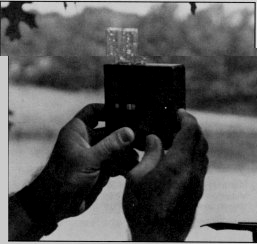
Scheduling Irrigation Grower uses a D.P.D. meter to check for adequate chlocrine concentration in system water chlorination, a procedure needed regularly to prevent clogging
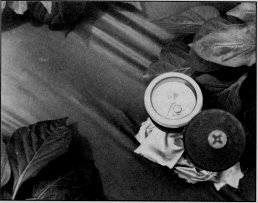
The tensiometer, shown above on peppers grown under plastic mulch, monitors soil moisture in the crop root zone. Tensiometers aid in scheduling irrigation to meet crop needs without wasting energy or water.
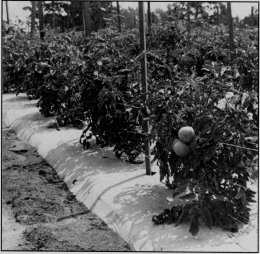
Growing vegetables such as tomatoes under plastic mulch with micro- irrigation is labor intensive and requires close monitoring but has high yield and quality pay-off.
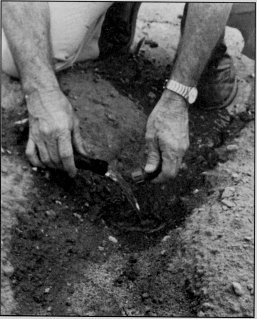
Micro-irrigation lateral lines are usually opened at their ends for flushing. System flushing is an important periodic maintenance requirement.
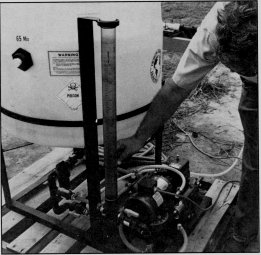
A chemical injection pump and supply tank provide the capability to apply fertilizers or other chemicals through the irrigation system.
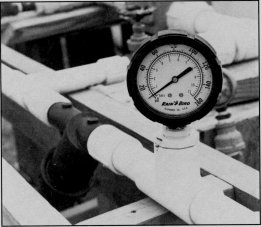
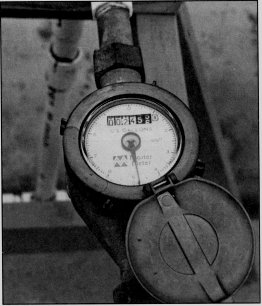
Accurate pressure gauges and flow meters provide essential information on system performances and should be monitored at each irrigation.
| Publications included in the Alabama Micro-Irrigation Handbook present up-to-date information on pratical irrigation methods that save energy and water while protecting water quaulity. For more information, see your county Extension agent. |
| Publication No.
Micro-Irrigation Handbook ANR-646 |
OCTOBER 1998 | Larry M. Curtis, Extension Agricultural Engineer, Professor, Biosystems and Agricultural Engineering, and Ted W. Tyson, Extension Agricultural Engineer, Associate Professor, Biosystems and Agricultural Engineering. |
Issued in furtherance of Cooperative Extension work in agriculture and home economics, Acts of May 8 and June 30, 1914, and other related acts, in cooperation with the U.S. Department of Agriculture. The Alabama Cooperative Extension System (Alabama A&M University and Auburn University) offers educational programs, materials, and equal opportunity employment to all people without regard to race, color, national origin, religion, sex, age, veteran status, or disability.
This document is author-produced (unedited).

 Menu
Menu


